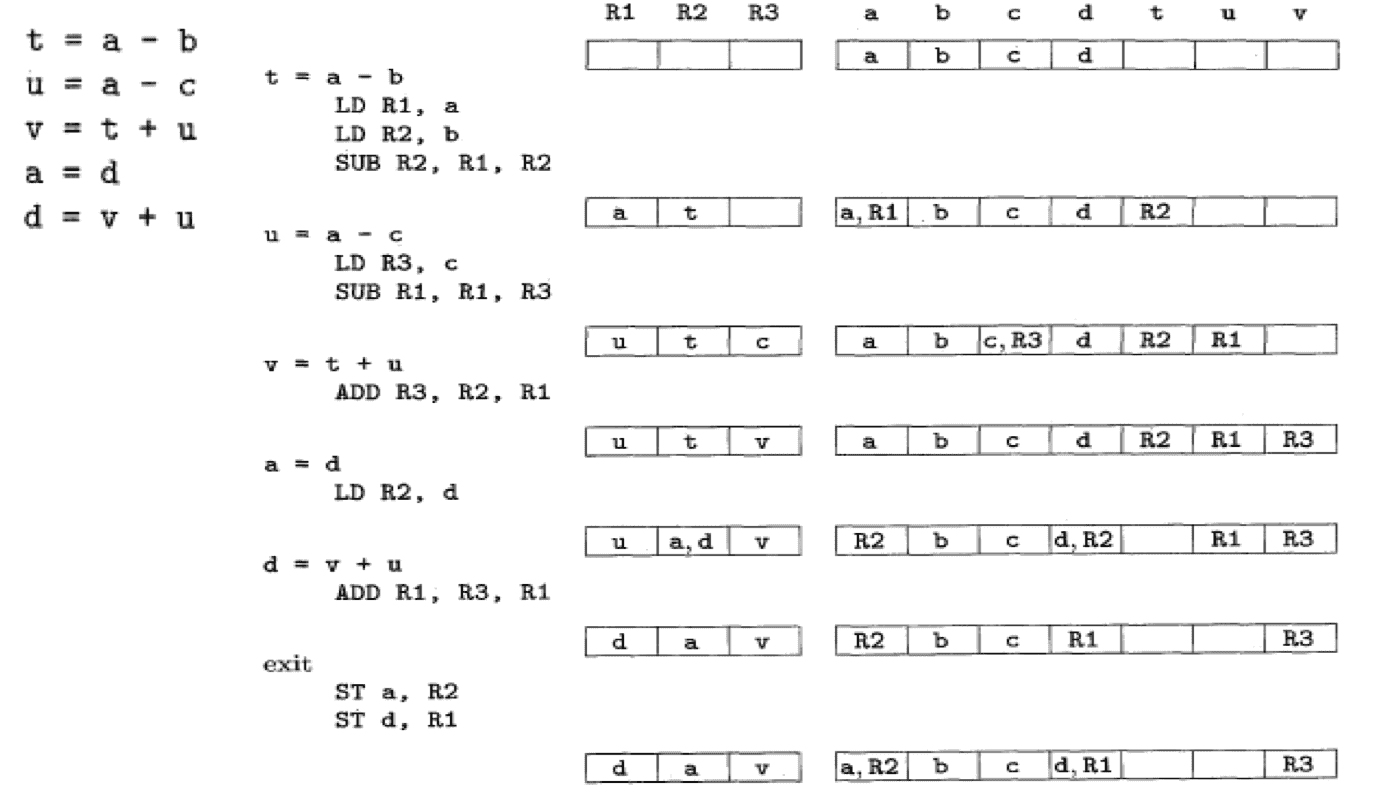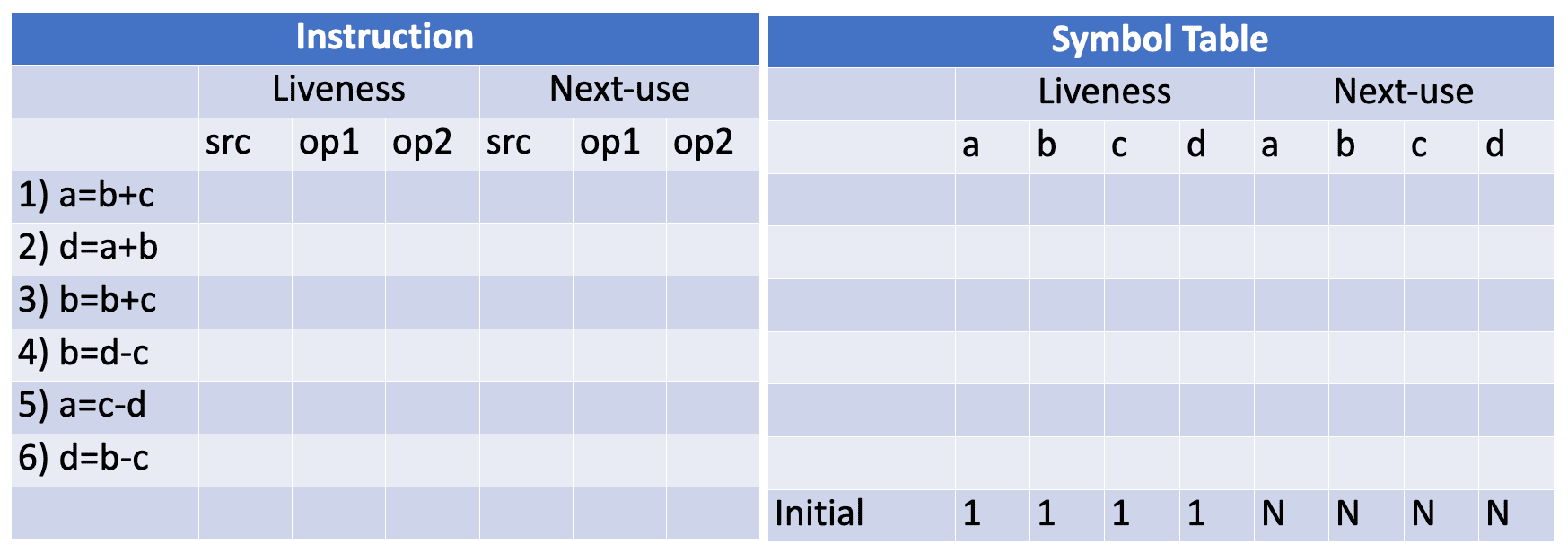08 Code Generation

The problem is undecidable and most of those subproblems, intractable (\(\not \exists\) efficient algorithms to solve them)
Requirements¶
- Maintain semantic meaning
- Must generate efficient code and makes maximum use of available resources
- Code generator itself must be efficient
Characteristics¶
- Target Machine has \(n\) registers \(R_0, \dots, R_{n-1}\)
- All operands are integers
Instruction Format¶
| load data | ld dest, src |
| store data | st dest, src |
| Arithmetic | add dest, src1, src2sub dest, src1, src2mul dest, src1, src2 |
| Unconditional jump | br L |
| Conditional jump | bltz r, lbgtz r, lblez r, lbgez r, lbz r, lbnz r, l |
Adressing Modes¶
| Mode | Example | Meaning |
|---|---|---|
| Indexed1 | ld r1, a(r2) | r1 = contents(a+contents(r2)) |
| Indexed2 | ld r1, 100(r2) | r1 = contents(100+contents(r2)) |
| Indirect | ld r1, *100(r2) | r1 = contents(contents(100+contents(r2))) |
| Immediate | add r1, r2, 100 | r1 = contents(r1) + 100 |
Examples¶






LD R1, q // R1 = q
LD R2, 0(R1) // R2 = contents(0+con(R1))
ST y, R2 // y = R2
ADD R1, R1, #4 //R1 = R1 + 4
ST q, R1 // q = R1
LD R3, p // R3 = p
ST 0(R3), R2 // contents(0+con(R3)) = R2
ADD R3, R3, #4 // R3 = R3 + 4
ST p, R3 // p = R3
SUB R1, R1, R1
ST s, R1
ST i, R1
L1: LD R1, i
LD R2, n
SUB R1, R1, R2 // R1 =i - n
BGTZ R1, L2
LD R1, s
LD R2, i
ADD R1, R1, R2
ST s, R1
ADD R2, R2, #1
ST i, R2
BR L1
Memory Representation¶

Liveness¶
IC has representation with infinite no of temporaries. This program should be able to run on a machine with limited registers.
2 temporaries \(t_1\) and \(t_2\) can be mapped to the same register, if \(t_1\) and \(t_2\) are never used at the same time
A variable is live if its current value is used in the future, without any intermediary step changing the value
Two Data structures
- Symbol table
- metadata associated with current instruction
Liveness Analysis¶
Assume the symbol table shows all non-temporary variables as live on exit and “no next use”

Input: Basic block B of three-address statements
Output: At each statement i: x = y op z, we attach to i the liveliness and next-uses of x, y and z, founding using the symbol table
We start at the last statement of B and scan backwards
- In the symbol table, set x to “not live” and “no next use”
- In the symbol table, set y and z to “live”, and next-uses of y and z to i
Run Time Memory Models¶
POPL
Registers Allocation & Assignment¶
Usage counts¶

- use(x, B) is 1 if x is used in block B prior to any definition of x
- use (x, B) is 0 otherwise
- live(x, B) is 1 if x is live on exit from B and is assigned a value in B
- live(x, B) is 0 otherwise